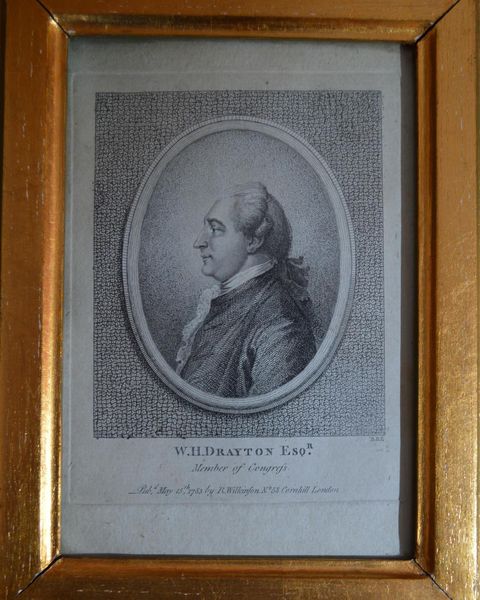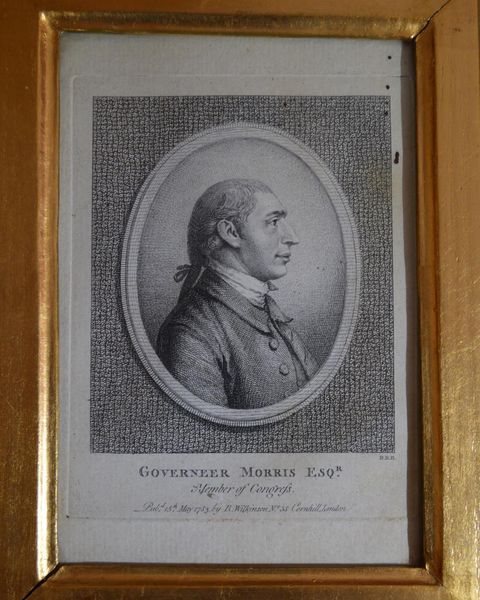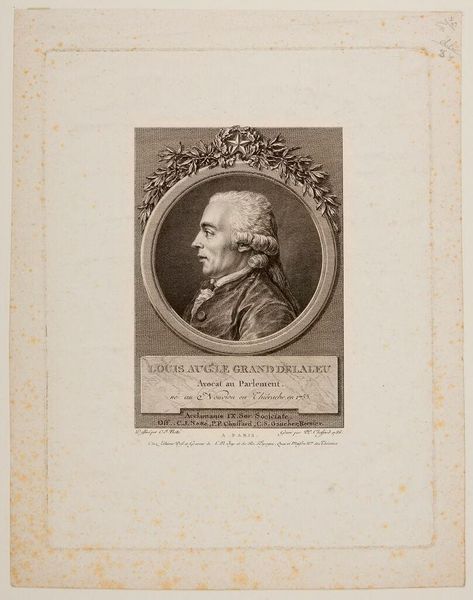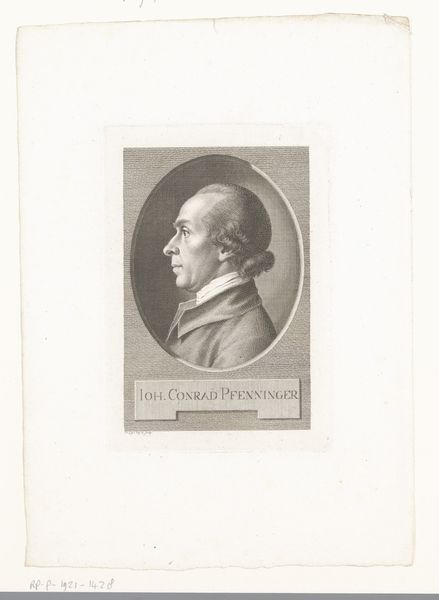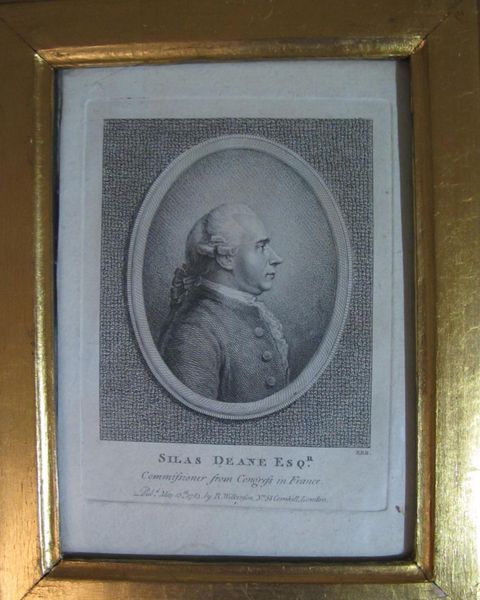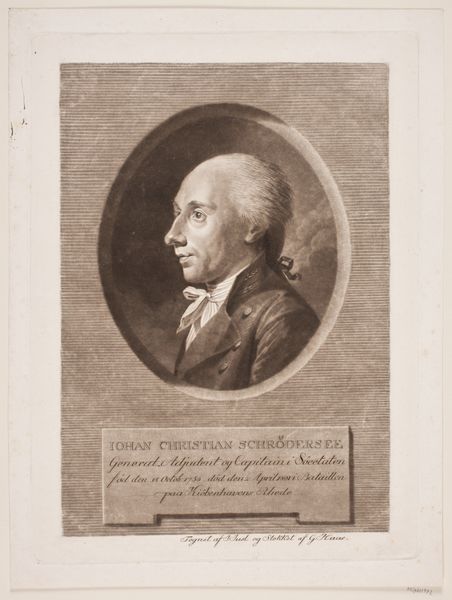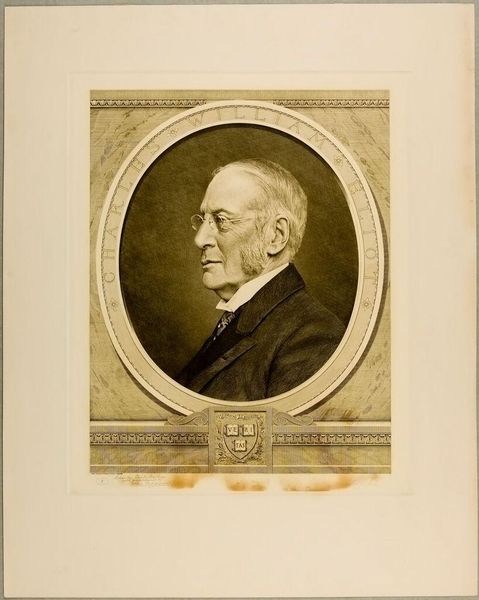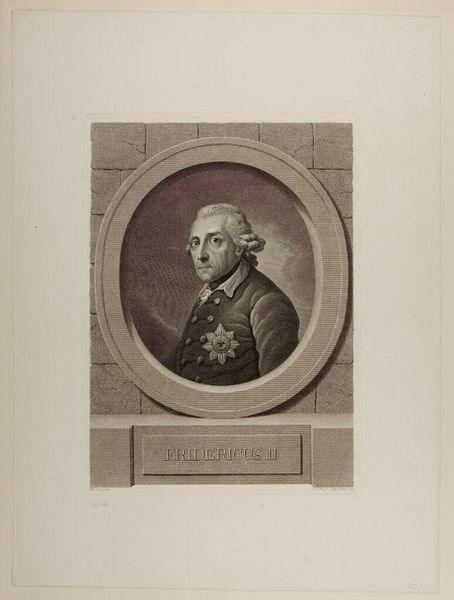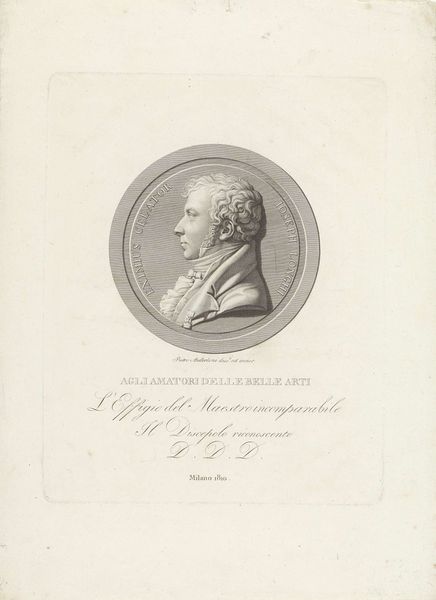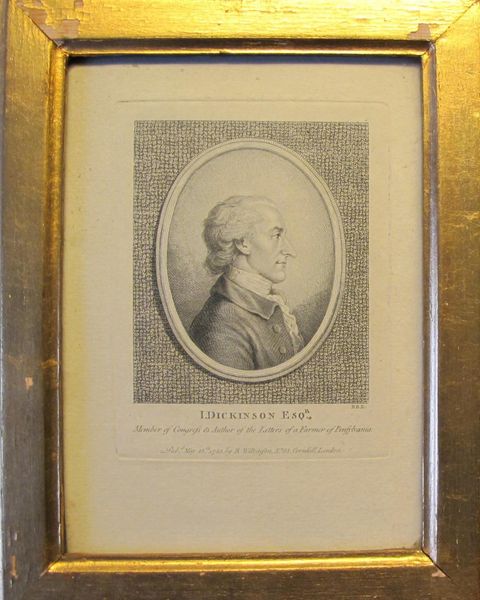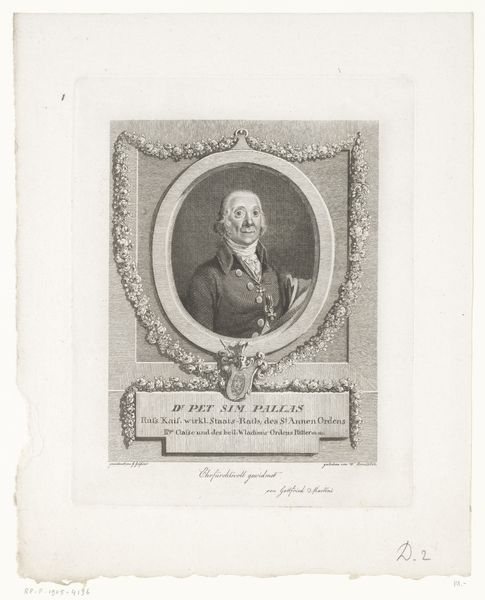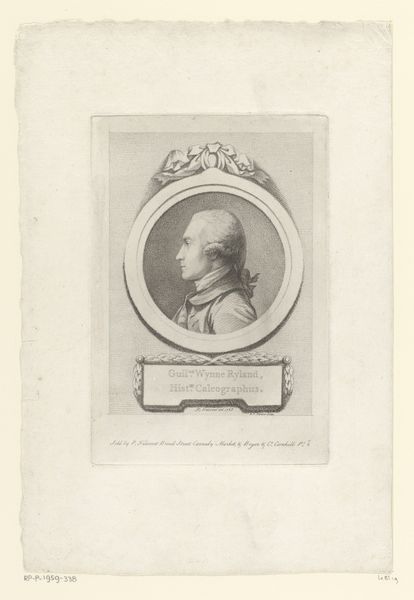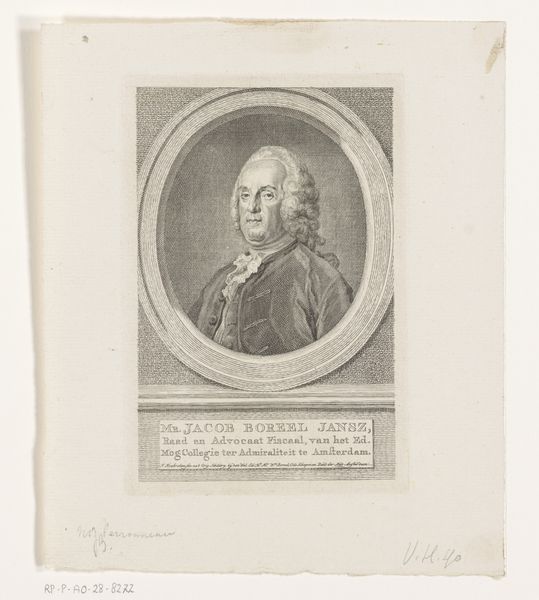
print, etching, engraving
#
portrait
#
neoclacissism
# print
#
etching
#
sculpture
#
framed image
#
engraving
#
portrait art
Dimensions: 165 mm (height) x 112 mm (width) (netto)
Editor: This etching from 1783, titled "'His Excellency S. Huntingdon President of Congress," is fascinating! It feels very formal and rigid, and I'm curious to understand why it was created. What’s your take on this piece? Curator: This portrait offers us a window into the formation of American identity and the visual language used to establish authority. Huntingdon, as President of Congress, held a pivotal role. Consider how this image, reproduced as a print, circulated and contributed to building a national image. What message does the neoclassical style, evident in the oval frame and restrained composition, convey? Editor: It feels like they’re trying to connect Huntingdon with the ideals of ancient Rome and Greece, almost as a way to legitimize the new government? Curator: Precisely! And how does the act of creating a portrait—especially through the relatively accessible medium of printmaking—contribute to that legitimization process? Who do you think the audience was for prints like these? Editor: I imagine they were aiming for a broad audience, something more accessible than an oil painting, to cultivate respect and maybe even a sense of shared identity among the populace. The printed copies would spread through society at different speeds, I assume? Curator: Absolutely. Also note the print line which tells us that the original publisher of this was in London. How does this speak to the nature of American Identity when you are reproducing a political image in another nation? Editor: So, even in declaring independence, America was still very much tied to European visual culture in spreading these ideas. I never considered that. Curator: Exactly. The distribution of prints played a crucial role in shaping public opinion and fostering a sense of national unity in a nascent nation, despite its reliance on European markets. This image, therefore, serves as both a portrait and a political artifact. Editor: That’s a really helpful way to think about it; it’s made me rethink the power that images held in shaping political views at that time. Curator: Indeed! By looking beyond the individual depicted and understanding the historical and social context of its creation and dissemination, we can glean a deeper understanding of the era.
Comments
No comments
Be the first to comment and join the conversation on the ultimate creative platform.
